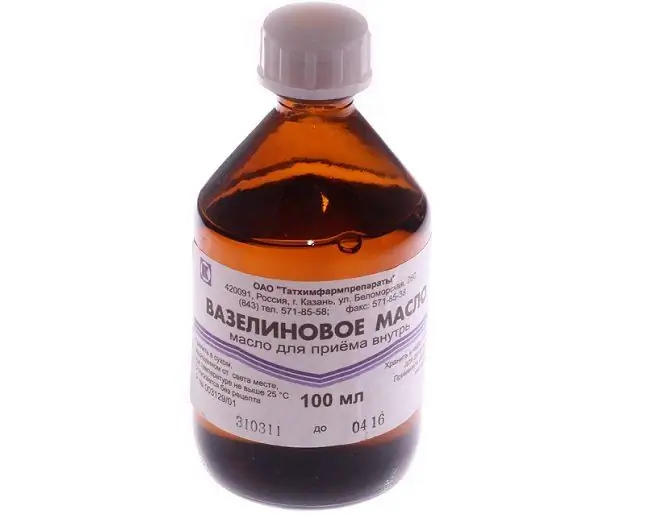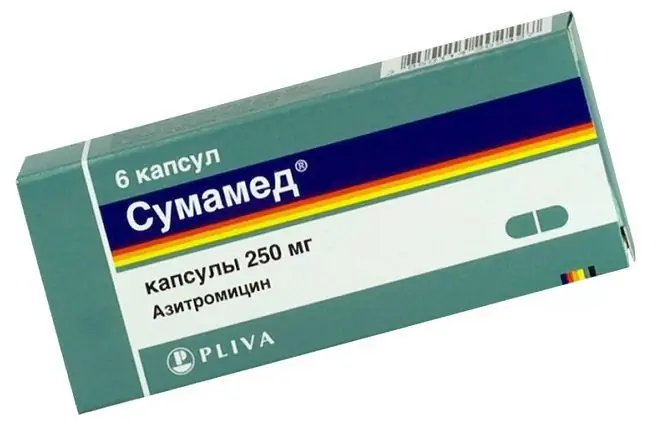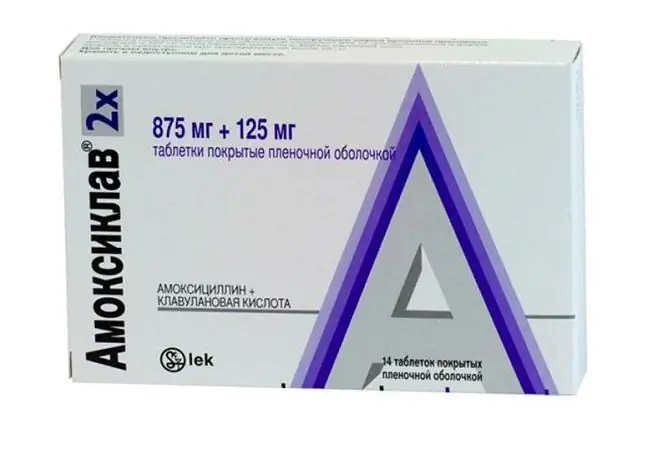- Author Rachel Wainwright [email protected].
- Public 2023-12-15 07:39.
- Last modified 2025-11-02 20:14.
Splenin
Instructions for use:
- 1. Composition and form of release
- 2. Pharmacological properties
- 3. Indications for use
- 4. Instructions for use
- 5. Contraindications
- 6. Side effects

Splenin belongs to the group of biostimulating agents. This hormone-free type of drug is obtained from the extraction of a solution produced from the spleen of cattle. Thanks to its immunomodulatory properties, Splenin effectively eliminates toxicosis in the early stages of pregnancy, strengthens the immune system and normalizes nitrogen metabolism.
Composition and form of release of Splenin
Main components: cattle spleen extract, 10% ethyl alcohol.
Splenin is available as a solution for intramuscular injection in ampoules of 1 ml, placed in a cardboard box of 10 pcs.
Pharmacological properties of Splenin
Splenin is a drug of animal origin with an antitoxic effect. The drug effectively acts to normalize nitrogen metabolism and improve liver function.
Medical research has proven the ability of cattle spleen extract to improve the functioning of the digestive system in malignant neoplasms in patients with an inoperable type.
Splenin, as part of complex therapy, eliminates inflammatory processes in the lungs, including at severe stages of pneumonia and tuberculosis.
The drug accelerates the positive dynamics of cancer treatment during the period of chemotherapy use.
Splenin has anti-inflammatory properties that are effective in treating a variety of dermatological conditions.
Indications for use
Indications for the use of Splenin are toxicosis in early pregnancy, dysfunction of the parathyroid glands, gestosis, inflammatory and viral diseases of the respiratory system, and oncological diseases.
Splenin is prescribed for the following dermatological diseases: parapsoriasis, atopic dermatitis, furunculosis, dystrophic epidermolysis, urticaria, angioedema, pityriasis versicolor, skin atrophy, keloid, abscess in children.
The drug can be prescribed as an immunostimulating agent during the period of chemotherapy, as well as complex treatment of HIV and AIDS.
Instructions for the use of Splenin
Splenin for toxicosis in early pregnancy should be taken in accordance with the degree of the disease:
- with toxicosis of the first degree - 1 ml of solution 1 time per day for 5-10 days;
- with toxicosis of the second degree - 4 ml, one injection for 10-15 days;
- with toxicosis of the third degree - 2 ml of solution 2 times a day for 15 days, followed by a decrease in dosage.
The general course of treatment for toxicosis should not exceed 30 days.
In case of disturbances in the functioning of the parathyroid glands, Splenin's solution should be administered 1 ml 1-2 times a day for 10 days.
During the period of chemotherapy for the treatment of oncological diseases, Splenin injections should be administered 2 times a day, 2 ml each (30-40 minutes after the irradiation).

For the treatment of inflammatory and viral diseases of the respiratory system, Splenin should be administered 2-4 ml 2 times a day. The drug is administered gradually over 3-5 minutes. The course of treatment is 14-20 days.
Contraindications
Splenin is contraindicated in case of hypersensitivity and intolerance to the components of the drug, internal bleeding, hormonal disorders, hepatic and renal failure, in children under 12 years of age.
The drug should be prescribed with caution in old age.
Side effects of Splenin
Medical studies have not revealed any serious side effects of the drug.
Long-term use of Splenin can cause allergic reactions - urticaria, itching, dermatitis, bronchospasm, eczema.
Information about the drug is generalized, provided for informational purposes only and does not replace the official instructions. Self-medication is hazardous to health!






